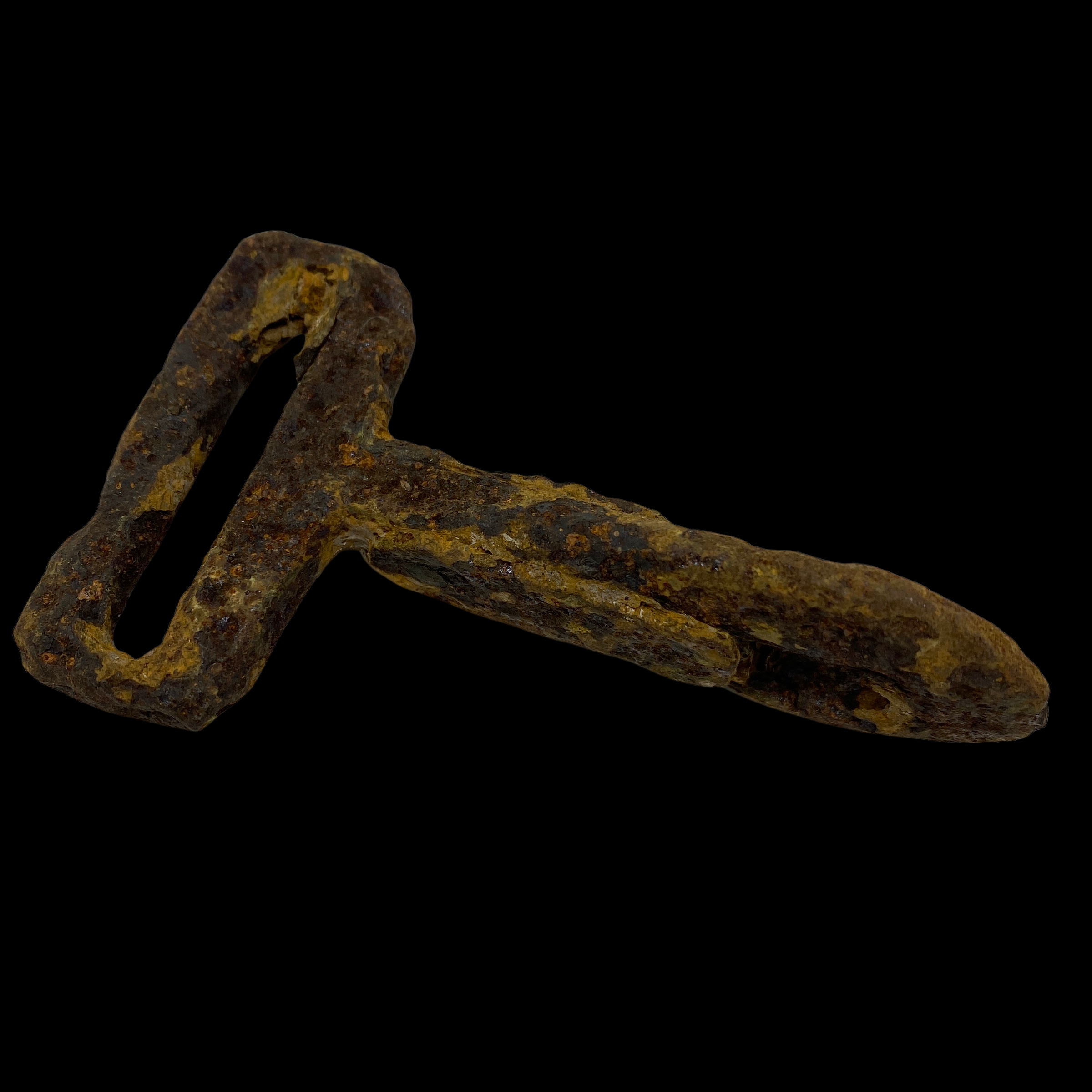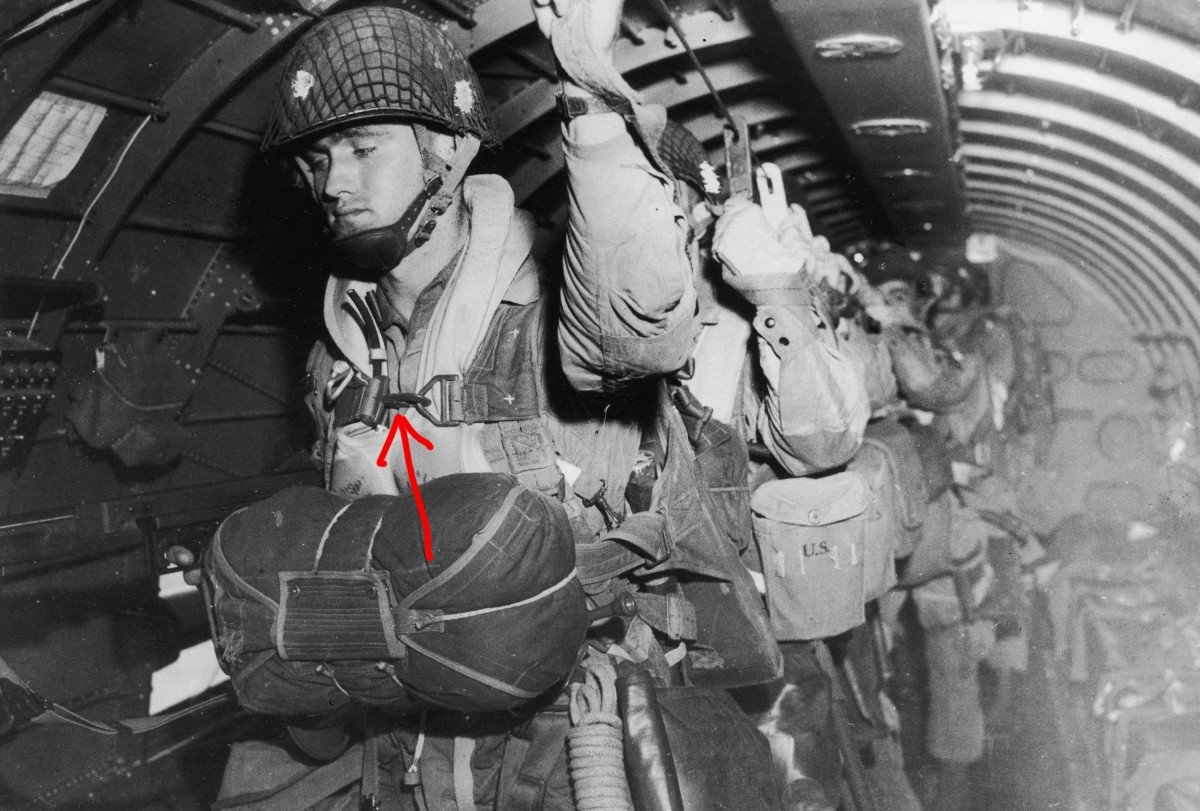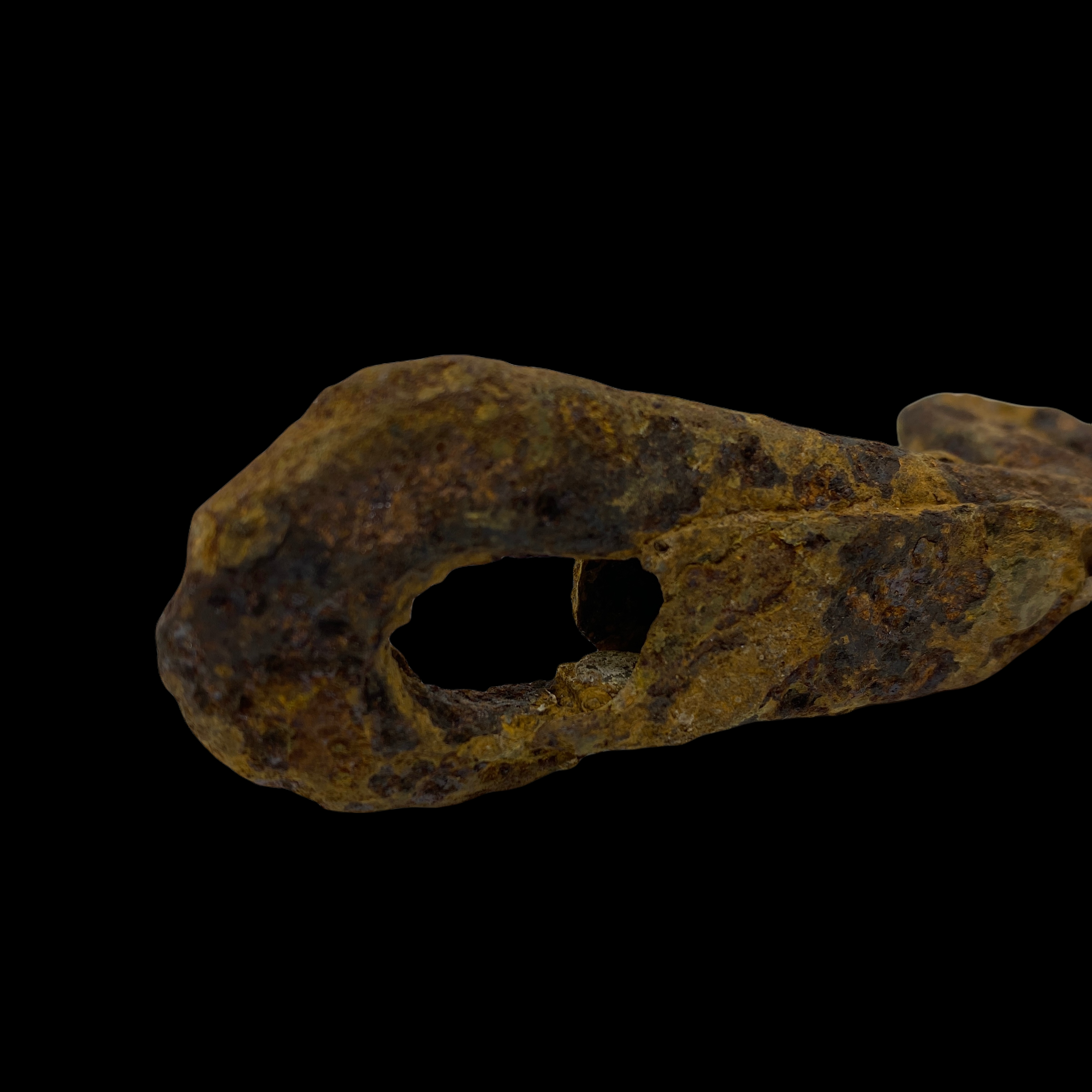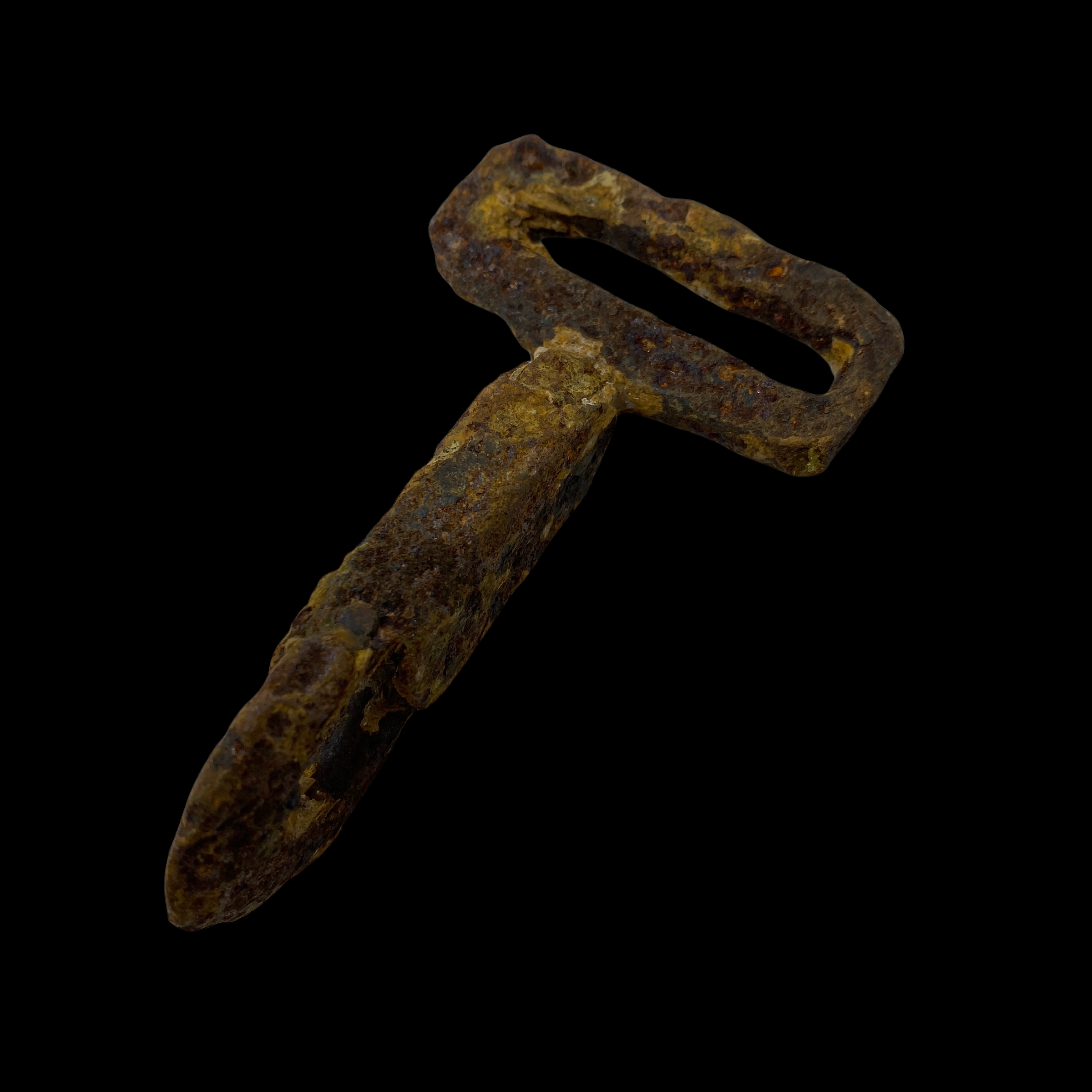WWII 1944 D-Day Airborne Paratrooper FRONT Parachute Harness Clasp Recovered Sainte-Mère-Église, Normandy









WWII 1944 D-Day Airborne Paratrooper FRONT Parachute Harness Clasp Recovered Sainte-Mère-Église, Normandy
Comes with C.O.A.
This incredible and very historic WWII D-Day artifact is an airborne paratrooper front harness clasp that would have been held and released upon landing. This parachute buckle was recovered near Sainte-Mère-Église, Normandy région, northwestern France. Sainte Mere Eglise was a strategic crossroads town situated along the N13, the road that led to Utah and Omaha beaches which if assaulted and captured from German troops would provide a vital exit road for the landing troops from Utah Beach.
The name of the airborne paratrooper that used this parachute clasp on June 6th, 1944 will remain lost to history. This artifact severe a solemn reminder of the men that sacrificed their lives so that soldiers landing on the beachhead only hours later would have less resistance and a clear path from the fortified German beaches.
The Mission:
Mission Boston was assigned to the 82nd US Airborne Division and the capture of Sainte Mere Eglise to the 505th Parachute Infantry Regiment. Their other objective was to seize the eastern ends of the bridges spanning the Merderet River at Chef-du-Pont and La Fière. These were the only two bridges that could sustain the crossing of the river with armor. The drops of the 82nd Division were scheduled five hours before the landings. Mission Albany would precede Mission Boston by one hour. The paratroopers of the US 101st Airborne were to destroy the batteries in Saint-Martin-de-Varreville and Mésières, capture the Douve River’s lock at La Barquette, two footbridges spanning the river at La Porte and the bridges that spanned it at Sainte-Come-du-Mont. Finally, they were to capture the causeways that linked Utah to the inland to allow the landing troops exit the beach.
The disastrous drops:
In the early hours of June 6 (between 00.50am and 1.40am) the pathfinders were dropped behind the enemy lines in order to prepare the drop zones. At 1.40am the men of the 82nd U.S. Airborne Division were dropped off over the Merderet River and marsh. The poor weather conditions – low cloud on the northern part of the Cotentin Peninsula and ground fog over the drop zones – altered the visibility of the marker flares installed by the pathfinders. Heavy German anti-aircraft fire added to the situation. As a result, the drops of both the 82nd and 101st Airborne Divisions were scattered over an area four times larger than the scheduled one. Indeed, the aircraft carrying the paratroopers found themselves under severe anti-aircraft enemy fire, as soon as they approached the coasts. The 505th was the only Regiment to be dropped almost accurately to the northwest of Sainte Mere Eglise! Many paratroopers from the 101st Airborne touched ground near Sainte Mere Eglise, far west from their planned drop zone.
Sainte Mere Eglise – 1.00am to 4.30am:
At 1.00am the constant enemy shelling – or maybe one of the marker flares dropped by the pathfinders – triggered a fire in one of the houses situated by the church in Sainte Mere Eglise. This obviously raised the alarm among the inhabitants and the Germans positioned in the village. Soon the fire wreaked havoc upon the town. Tragically, it also lightened up the sky and allowed the Germans to locate the paratroopers of the 2nd Battalion of the 505th PIR, as they were coming down. Numbers of paratroopers were therefore riddled with bullets before reaching the ground. Others landed on trees or utility poles and were killed before they could even undo their parachutes. Tragically others landed straight into the inferno. They were eventually rescued by 158 paratroopers of the 3rd Battalion of the 505th Parachutist Infantry Regiment and elements from the 101st Airborne, all placed under the command of Lieutenant-Colonel Krause. The men encircled Sainte Mere Eglise and seized the village at 4.30am, making about 30 prisoners. Sainte Mere Eglise became known to the world after the film The Longest Day because of the paratrooper John Steele of the 505th Parachute Infantry Regiment. Steele indeed landed on the church’s steeple and pretended to be dead to avoid being shot by the Germans. He stayed put, hanging in the air, for two long hours and watched helplessly as the Germans shot his comrades around him. The Germans, however, took him as a prisoner, but not for long. Steele managed indeed to escape and joined his Division when it entered the village at 4.30am. A German counterattack was neutralised on June 7. Sainte Mere Eglise is proud to be one of the first Norman towns liberated on D-Day.